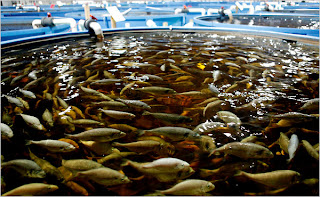What is cellulose?
Cellulose has recently become a popular food additive; from ice cream to salad dressing, food companies are taking advantage of this miracle product that cuts calories and costs. But what exactly is cellulose and how is it being used? Cellulose is an essentially non-toxic, processed wood pulp that can be manipulated and used in various ways. The type of cellulose most popular in food manufacturing is generally a processed powder or pulp from virgin wood (cnaturalnews.com).
Most commonly, cellulose is used in processed food manufacturing as a fiber supplement, calorie reducer, emulsifier, and for anti-caking purposes (source).
Food manufacturers are increasingly using cellulose as an inexpensive filler that has no caloric or nutritional value. The human digestive system does not have the enzymes required to digest cellulose. Therefore, when cellulose is consumed, it merely passes through the body. Inability to digest cellulose makes it a key ingredient in the manufacturing of diet food products because it provides bulk without caloric content and without significantly altering taste. “People who eat foods with a high cellulose content [feel] full physically and psychologically without having [to] consume many calories” (Source). In fact, cellulose is most common in foods that are labeled as being high in fiber or reduced fat.
Cellulose has emulsifying and gelling properties, when combined with water, that both thicken and stabilize the food to which it is added. For this reason, cellulose is often added to sauces and dressings in order to improve texture. This property also improves the texture of dietary ice cream products.
Lastly, cellulose is ideal for anti-caking applications because of its ability to absorb moisture. Manufacturers of shredded and grated cheeses use cellulose to prevent the cheese from sticking. Cellulose’s water absorbent properties are also used in spice mixes and powdered drink mixes in order to prevent dampness.
Why is demand for cellulose going up?
There are three factors that account for the increased popularity of cellulose: (a) endorsement by the Food and Drug Administration (FDA), (b) low cost when compared to alternative products, and (c) multiplicity of potential uses of cellulose in food products. Let us examine each of these.
According to the FDA, cellulose is safe for human consumption despite the fact that humans lack the necessary enzymes to digest this ingredient. Furthermore, the FDA has not imposed any restrictions with respect to how much cellulose can be used in food products as a filler. On the other hand, it is important to note that the USDA has limited the use of cellulose in meat products to 3.5%. The lack of meaningful restrictions with respect to its use makes cellulose appealing to food manufacturers across all boards.
The use of this ingredient is much less expensive when compared to ‘real’ food ingredients such as oil or flour, which are becoming pricier. By using cellulose, food manufacturers can save as much as 30% in ingredient costs. “The rising cost of raw materials like flour, sugar and oil is helping boost the popularity of these additives.”
Cellulose has a multitude of uses in the manufacturing of processed food goods. “Food-product makers use it to thicken or stabilize foods, replace fat and boost fiber content, and cut the need for ingredients like oil or flour, which are getting more expensive” (Source). According to Dr. Jennifer Nelson, small cellulose particles impart a smooth consistency, mouthfeel and stickiness to products such as salad dressings, barbecue sauces and, yes, ice cream. Longer fiber lengths provided by cellulose additives allow for a more firm texture in baked goods. Cellulose also contributes to moisture retention, which helps to keep food products from seeming dry.
For the various reasons noted above, cellulose now plays a valuable role in the food industry, and we may expect to see its continued use in the near future.










